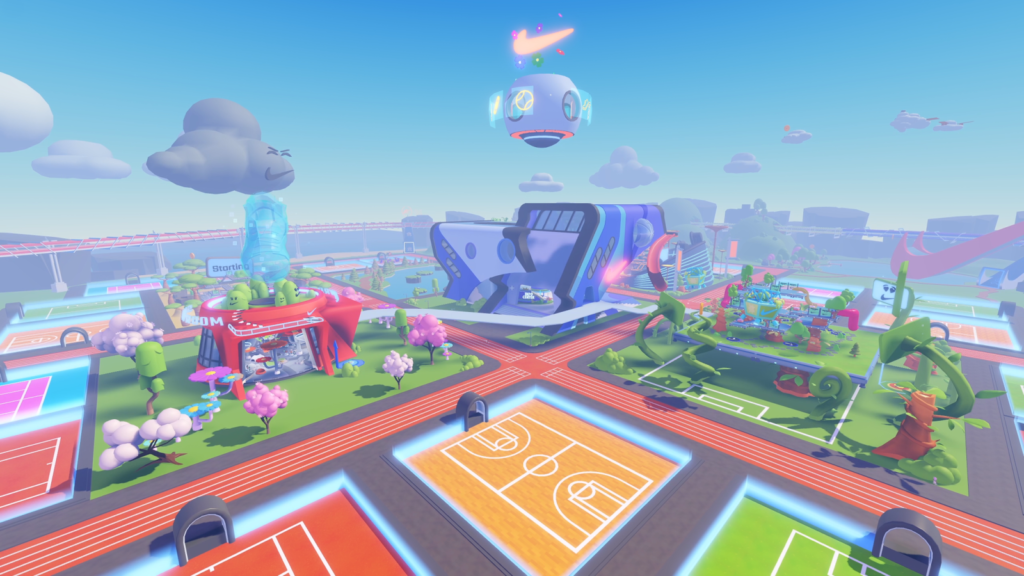The metaverse: what does it mean for brands and businesses?
You may have noticed in the news that Facebook has rebranded itself as Meta. The social media giant, which has over 2.89 billion monthly active users worldwide, in addition to the 1 billion Instagram users and 2 billion WhatsApp users, is continuing its shift away from the initial dorm room yearbook idea that Mark Zuckerberg had back in the early noughties into an area called ‘the metaverse’.
You may also have noticed the phrase ‘web3’ being used alongside conversations about the metaverse and wonder what that is, too. Add into this additional phrases such as blockchain and NFTs, and it can start to feel like a very confusing and hard to define space.
In this first in a series of blogs, we will explain what the metaverse is, and the potential opportunities for brands and businesses within this space.
What is the metaverse?
Simply put, the metaverse is an ecosystem of interconnected physical and digital worlds, built on top of the original architecture of the internet. It’s designed to be a collection with worlds where people can socialise, learn, collaborate, and trade in ways that go beyond traditional web browsing.
Whilst Facebook may have been the biggest player to thrust headlong into this new concept, they are not the sole architects and innovators within this space. In fact, you or your children may already have engaged with it. Immersive games such as Fortnite and Roblox are ‘always on’ virtual worlds in which players can engage, trade, and purchase virtual products from brands and from each other.
Commerce and play combined
Roblox is a particularly interesting case in point. Users can not only play the game within this persistent, always-on virtual world, they can also create assets that they can buy and sell on the platform using a virtual currency called Robux. These assets range from objects within the game, such as buildings and games, to clothing items. These creators can then either spend the Robux currency within the game, or ‘cash out’ in their preferred currency. At the current UK exchange rate, 1 Robux is worth 1.14 pence.
Brands are already staking their claim in this new online space. Games and virtual worlds such as Fortnite, Roblox and Decentraland are already being colonised by brands such as Sotheby’s, Forever 21, Nike and Star Wars.

Concerts are also taking place within these environments, with the pop star Aria Grande performing a show from her tour live within Fortnite, with both Grande and her audience present as digital avatars only.
What does it mean for businesses?
What it means for businesses and individuals is a shift in the online experience both personally and professionally. Not quite a complete re-imagining of the online experience, but an additional layer that interlinks additional real-world and online experiences. The meeting point of virtual reality, augmented reality and the internet as we already know it.
Meetings and creative whiteboarding sessions will take place in virtual environments. Shops will need to start considering immersive VR options that go beyond a simple e-commerce websites or presence on a social media platform. Augmented reality experiences will be commonplace for both in-store and conference activity, thanks to smart glasses similar to Google’s Glass project in 2013.
What does this mean for brands?
It’s hard to believe, but in years to come, due to the evolution of VR, augmented reality, AI, blockchain and the growing presence of the Internet of Things, we may be moving to a space beyond laptops, desktops and fixed-point technology.
Whilst thinking about virtual worlds accessed by VR goggles or via your laptop might not be something that’s front of mind, there will come a time when you’ll need to consider your brand experience within the metaverse.
Just in the same way that you have a web presence, a social media presence and an offline presence, you will need to consider what your presence is in the metaverse, and how to translate your brand experience into this new environment. Will you create a department store in Decentraland? A space station in Fortnite?
These are questions that will need to be answered at some point. And some brands are already trying to answer this. Even questions as abstract as ‘what will my brand feel like in the metaverse?’
Ultimately, the metaverse is a world that is based on virtual reality, traditional cyberspace, and augmented reality. And eventually, just as every brand needs a website, every brand will need a presence on this platform your brand will need to soon. Yes, it’s still emergent. Yes, it may be a while away for your business. But it doesn’t mean that you shouldn’t be considering it now.
What’s next?
In conjunction with the metaverse, you will also have heard phrases including web3, cryptocurrency, NFTs and Blockchain. These are all elements that tie into the fabric of the metaverse but deserve a more in-depth investigation. Part 2, ‘What’s Next’, will cover web3, NFTs, cryptocurrency and the blockchain, and how the metaverse will be underpinned by these developments.
Here at Studio North, we’re always thinking about how your brand will evolve over time – wherever it is. Speak to us today to prepare yourself for tomorrow.



